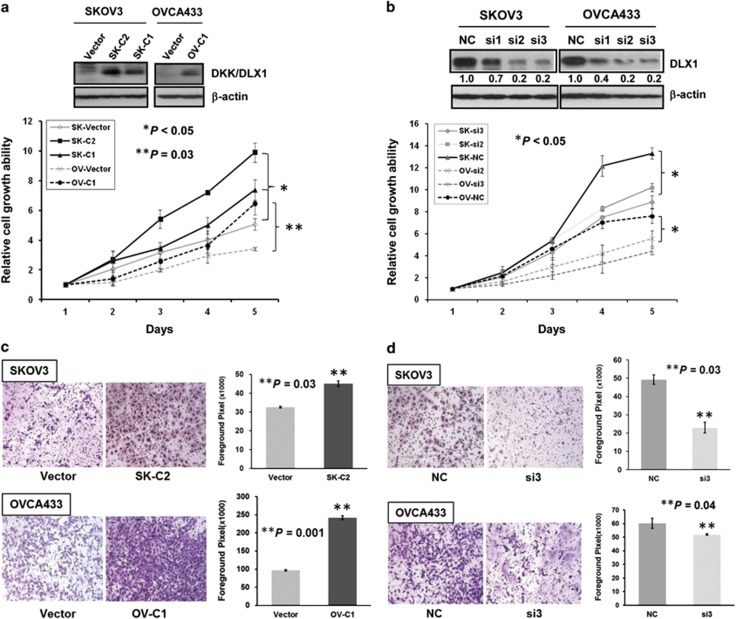Figure 4.
DLX1 is able to enhance cell proliferation and cell migration. (a) SKOV3 and OVCA433 (OV-C1) cells stably expressing DLX1. Vector represents the vector control. The XTT cell proliferation assay showed that cell proliferation was significantly increased in the SKOV3 cells by 1.5-fold (SK-C1 and SK-C2) (*P<0.05, Student's t-test) and in the OVCA433 cells (OV-C1) by twofold (**P=0.03, Student's t-test) following DLX1 overexpression. (b) Successful DLX1 knockdown in SKOV3 and OVCA433 cells with two siRNA oligonucleotides (si2 and si3). The XTT cell proliferation assay demonstrated that the cell growth rate of the DLX1 knockdown SKOV3 and OVCA433 cells was decreased by ~1.5-fold and by twofold, respectively, compared with their scrambled controls (*P<0.05, Student's t-test). (c) The cell migration rate of the SKOV3 (SK-C2) (*P=0.03, Student t-test) and OVCA433 (OV-C1) cells was increased by 1.5-fold and 2.5-fold, respectively (**P=0.001, Student's t-test), following DLX1 overexpression. (d) The migration of the SKOV3 and OVCA433 cells was reduced by twofold (**P=0.03, Student's t-test) and onefold (**P=0.04, Student's t-test), respectively, following DLX1 knockdown.

